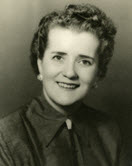 Coya Knutson is a Concordia alumna who can serve as an inspiration for women across the United States, and especially from the North Dakota/Minnesota area. She was a strong-minded, independent woman in an era when women were often in the background of their own lives. Knutson was an effective member of Congress; however, her career as a U.S. Representative was unfortunately cut short. She was defeated in her bid for reelection due to inherent sexism in politics at the time, accomplished through actions by her Democratic-Farmer-Labor party colleagues in collaboration her husband. Coya Knutson is a Concordia alumna who can serve as an inspiration for women across the United States, and especially from the North Dakota/Minnesota area. She was a strong-minded, independent woman in an era when women were often in the background of their own lives. Knutson was an effective member of Congress; however, her career as a U.S. Representative was unfortunately cut short. She was defeated in her bid for reelection due to inherent sexism in politics at the time, accomplished through actions by her Democratic-Farmer-Labor party colleagues in collaboration her husband.
|
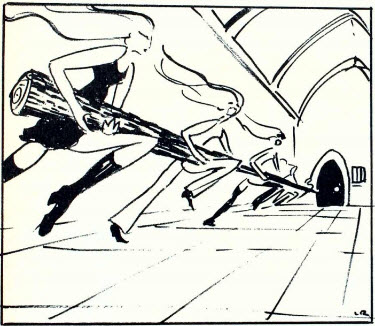 Until the early 1970s, Concordia College imposed restrictive rules and strict regulations pertaining to women’s curfews and lights out. The questioning of authority surrounding the Vietnam War and the feminist movement helped to empower female Cobbers to advocate for their personal freedom. Through a variety of strategies such as demonstrations, lobbying, and expressing opinions in the campus newspaper, women studying at Concordia gained personal freedom and independence when Women’s Hours were eliminated in 1973. Until the early 1970s, Concordia College imposed restrictive rules and strict regulations pertaining to women’s curfews and lights out. The questioning of authority surrounding the Vietnam War and the feminist movement helped to empower female Cobbers to advocate for their personal freedom. Through a variety of strategies such as demonstrations, lobbying, and expressing opinions in the campus newspaper, women studying at Concordia gained personal freedom and independence when Women’s Hours were eliminated in 1973.
|
Concordia College’s campus houses a select number of academic buildings named after various benefactors as well as historical figures significant to Minnesota. The oldest building on campus, Bishop Whipple, is named after the Epsicopal Bishop Henry Benjamin Whipple. The structure, formerly the home of the Bishop Whipple Academy, was purchased by the Northwestern Lutheran College Association in 1891 in order to establish a Norwegian Lutheran school in Moorhead. While many Concordia students and faculty learn and work in this building on a daily basis, most are unaware of the work done by Bishop Whipple, the namesake of this iconic Concordia building. More so, Bishop Whipple’s connection to and work done for the Dakota and Ojibwe peoples from our region, which is unknown to most of the Concordia population, must be assessed and recognized at a campus wide level. Through his passions and labors, Bishop Whipple helped 265 Dakotas obtain pardon from execution after the US-Dakota War. After this, Whipple continued his mission of advocacy for Native Americans, continuing the work of his missions across the state of Minnesota as well.
|
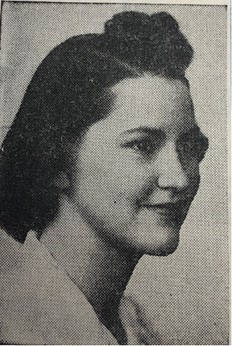 Jean Ahlness Stebinger was a 1943 graduate of Concordia. She was stationed in the American Embassy in Cairo, Egypt during World War II and arranged meetings between North African leaders and President Franklin Roosevelt. She also travelled the world and participated in humanitarian efforts. Jean Ahlness Stebinger was a 1943 graduate of Concordia. She was stationed in the American Embassy in Cairo, Egypt during World War II and arranged meetings between North African leaders and President Franklin Roosevelt. She also travelled the world and participated in humanitarian efforts.
|
 Women’s athletics thrive at Concordia, but the varsity programs currently known and loved did not have their beginning until 1972 and have undergone some dramatic changes in management over the decades, from the Women’s Athletic Association (WAA) and the Association for Intercollegiate Athletics for Women (AIAW), to the National Collegiate Athletic Association (NCAA). Women have fought for the chance to have their talents shine on the court, on the field, in the pool, and more, and while this trend towards gender equality is still ongoing, women’s athletics have nonetheless gained great strides. Women’s athletics thrive at Concordia, but the varsity programs currently known and loved did not have their beginning until 1972 and have undergone some dramatic changes in management over the decades, from the Women’s Athletic Association (WAA) and the Association for Intercollegiate Athletics for Women (AIAW), to the National Collegiate Athletic Association (NCAA). Women have fought for the chance to have their talents shine on the court, on the field, in the pool, and more, and while this trend towards gender equality is still ongoing, women’s athletics have nonetheless gained great strides.
|
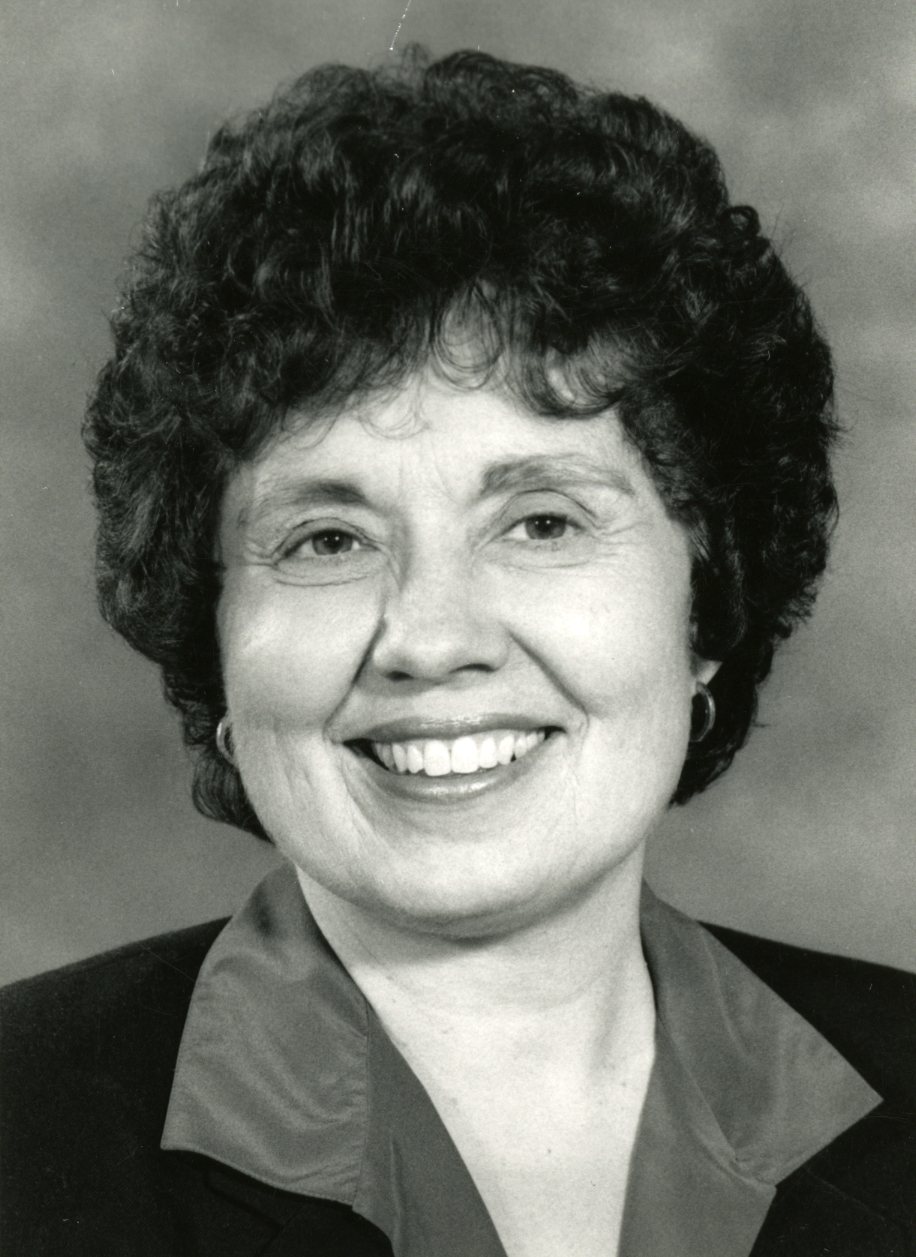 Dr. Joan N. Buckley had a long and fulfilling career at Concordia College, honored by the awards she gained during her tenure. One of three female professors at Concordia in 1956 when she began her work for the college, Dr. Buckley made her mark on campus by being the first female faculty member to receive her doctoral degree while employed, married, and raising a child. While this accomplishment was not appreciated at the time, the achievement came to be respected in Concordia’s history. Dr. Joan N. Buckley had a long and fulfilling career at Concordia College, honored by the awards she gained during her tenure. One of three female professors at Concordia in 1956 when she began her work for the college, Dr. Buckley made her mark on campus by being the first female faculty member to receive her doctoral degree while employed, married, and raising a child. While this accomplishment was not appreciated at the time, the achievement came to be respected in Concordia’s history.
|
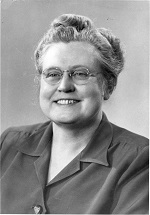 In 1937, Dr. Mae Anderson became the first woman to head a department at Concordia College in a non-traditional subject for women: mathematics. She was also one of the few women in the United States to achieve a doctorate in the subject before 1940. In addition to her scholarly achievements she was active in campus organizations and events. In 1937, Dr. Mae Anderson became the first woman to head a department at Concordia College in a non-traditional subject for women: mathematics. She was also one of the few women in the United States to achieve a doctorate in the subject before 1940. In addition to her scholarly achievements she was active in campus organizations and events.
|
 In 1921, a group of faculty women and wives at Concordia College in Moorhead, Minnesota joined together to form a club devoted to both social activities and to raising money for students in financial need. In the almost seventy years that followed, the Concordia Women’s League formed successful student loan and scholarship funds, contributed to several worthwhile campus projects, and developed a long-lasting legacy. In 1921, a group of faculty women and wives at Concordia College in Moorhead, Minnesota joined together to form a club devoted to both social activities and to raising money for students in financial need. In the almost seventy years that followed, the Concordia Women’s League formed successful student loan and scholarship funds, contributed to several worthwhile campus projects, and developed a long-lasting legacy.
|
When the United States decided to forego their neutrality to the first World War in 1917, thousands of American men were drafted into the armed forces. Although women were unable to enlist, their services were required and appreciated in Red Cross work either as nurses or as citizen volunteers simply rolling and packing bandages. Women of Concordia College were quick to participate in the Moorhead chapter of the Red Cross by rolling bandages and knitting sweaters, mittens, caps, and scarves.
|
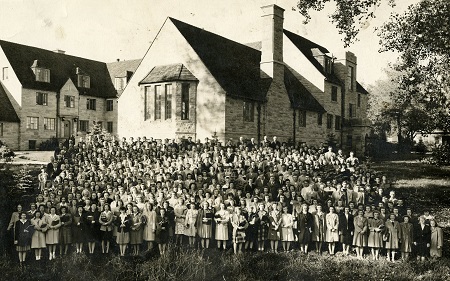 In the midst of World War II Concordia College adapted to wartime restrictions and decreasing enrollment. Due to the military draft the number of male students enrolled dropped, while the number of females attending the college increased dramatically. Accordingly, Concordia established programs and courses that allowed and encouraged women to contribute to the war effort. In the midst of World War II Concordia College adapted to wartime restrictions and decreasing enrollment. Due to the military draft the number of male students enrolled dropped, while the number of females attending the college increased dramatically. Accordingly, Concordia established programs and courses that allowed and encouraged women to contribute to the war effort.
|
 Coya Knutson is a Concordia alumna who can serve as an inspiration for women across the United States, and especially from the North Dakota/Minnesota area. She was a strong-minded, independent woman in an era when women were often in the background of their own lives. Knutson was an effective member of Congress; however, her career as a U.S. Representative was unfortunately cut short. She was defeated in her bid for reelection due to inherent sexism in politics at the time, accomplished through actions by her Democratic-Farmer-Labor party colleagues in collaboration her husband.
Coya Knutson is a Concordia alumna who can serve as an inspiration for women across the United States, and especially from the North Dakota/Minnesota area. She was a strong-minded, independent woman in an era when women were often in the background of their own lives. Knutson was an effective member of Congress; however, her career as a U.S. Representative was unfortunately cut short. She was defeated in her bid for reelection due to inherent sexism in politics at the time, accomplished through actions by her Democratic-Farmer-Labor party colleagues in collaboration her husband.





